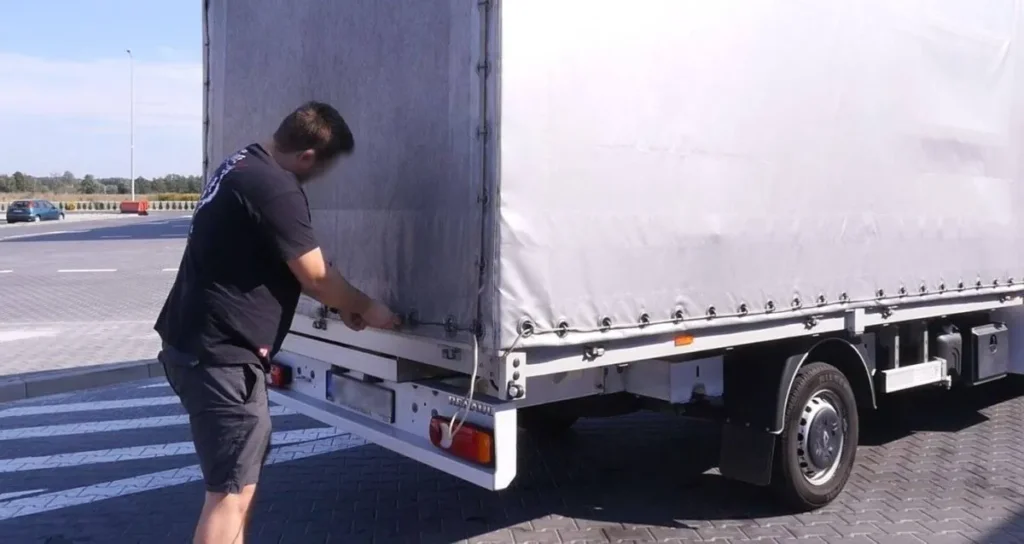In its new eBook, Investing in Drivers: A Losing Game or the Future of Transport?, Girteka CEO Mindaugas Paulauskas calls for a radical shift in mindset across the industry and among policymakers. His message is simple: stop treating drivers as a cost.
“If you think investing in drivers is a risk, you don’t understand where we are as an industry today,” Paulauskas says. “Drivers are our most important resource, and their development, comfort and respect are a condition for survival, not a benefit.”
Regulatory bottlenecks
Girteka insists that interest in the job remains strong, the company receives a steady stream of applications and even sees former employees returning. The real bottleneck, it says, lies in visa and work permit restrictions that make it difficult to employ qualified non-EU drivers.
“Visa rules and work permit requirements have become significantly stricter compared to just a few years ago,” Paulauskas notes. “Unless there is meaningful policy action across the European Union, the situation will most likely worsen.”
He calls for “easing legal requirements for non-EU drivers” and for closer cooperation between Brussels and the logistics sector in shaping realistic migration and labour policies.
According to IRU figures cited in the report, Europe already faces more than 426,000 unfilled driver positions, a number expected to rise to over 745,000 by 2028 if no changes are made.
Shared responsibility for driver conditions
Girteka also emphasises that transport companies cannot solve the problem alone. Through its Mindaugas on the Road initiative, in which the CEO spent several days driving alongside one of Girteka’s long-haul drivers, the company highlighted the daily challenges drivers face: particularly the lack of safe parking, secure rest areas and proper accommodation required under EU rules.
“The Mobility Package requires regular weekly rest outside the cabin, but there are simply not enough facilities across Europe to make that possible,” Paulauskas says. “If new requirements create new costs, who is going to cover them? Because at the end of the day, someone will have to.”
Girteka plans to extend the project with Mindaugas on the Road 2.0, this time analysing conditions at loading and unloading points and how shippers and customers treat drivers.
“Transport is a shared responsibility,” Paulauskas stresses. “The quality of a driver’s work depends not only on the carrier but also on customers, warehouses, road infrastructure and public policy.”
The missing piece: pay and work conditions
While Girteka’s eBook makes a strong case for investing in people and easing regulatory barriers, the one issue it barely touches is also the simplest: pay.
For many in the industry, low wages and long working hours remain the main reason why younger Europeans avoid truck driving altogether. Training and better facilities certainly help but as long as rest areas, safety and infrastructure remain inadequate, no one can reasonably expect people to do this job for wages close to the minimum.
According to job listings currently available on Girteka’s own recruitment portal, drivers formally employed in Lithuania or Poland can earn between €2,460 and €2,760 net per month, depending on route and region. In local terms, those offers are competitive: well above the Lithuanian national average of around €1,277 net and broadly in line with Poland’s international haulage wages, which typically stand at about €2,345 net.

However, the broader European divide remains stark. As Trans.INFO previously reported, UK lorry drivers earn about €3,930 a month, while German drivers average €2,536 net, still 13% below their national average. The contrast shows how fragmented Europe’s wage landscape has become, and why even competitive offers in Central and Eastern Europe struggle to make the profession attractive compared to Western standards.
That’s why Girteka’s call for easier recruitment of non-EU drivers raises eyebrows among lorry drivers. While such measures might help fill vacancies, they risk reinforcing the East–West pay divide rather than resolving it. Expanding the recruitment pool alone does little to fix the core issues of pay, working conditions and retention.
“Invest in the people who drive the technology”
Girteka’s latest report frames the driver shortage issue as a strategic choice: companies are happy to spend millions on vehicles, automation and telematics, but much less on the people who operate them. The company’s own approach, Paulauskas explains, is to link both.
The group recently signed a 2,000-truck deal with Volvo, believed to be Europe’s largest single truck order this year, and secured €173 million in financing from OP Corporate Bank to expand and modernise its fleet. Alongside this, it plans to invest around €300,000 in driver training, focused on safety, temperature-controlled cargo handling, and the use of digital equipment.
“Fleet and training investments must progress together,” Paulauskas says. “The truck is a driver’s workplace, so it must be safe, comfortable and equipped with the latest technology.”









